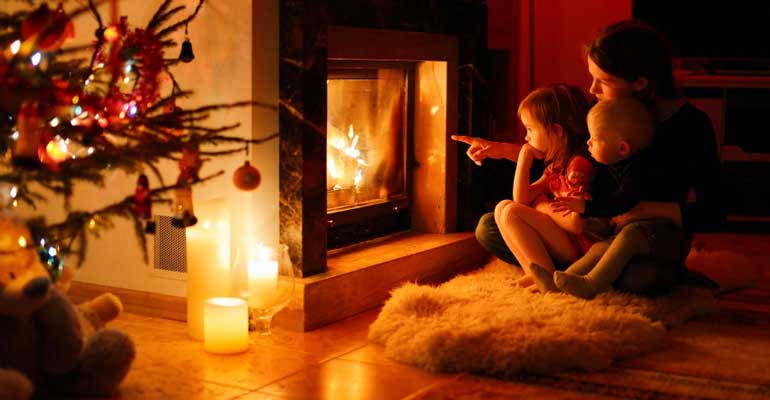When we stepped off the airplane in San Francisco, we had two goals: to take showers and to collapse into comfortable beds. But our long-term goal was more important: We wanted to become a family. Technically, we were — we had filled out mounds of paperwork, met with the social worker, flown to Russia, met our children, talked to the judge, taken the requisite picture in front of St. Basil’s, and flown home. Now we were here, charting a future on an unknown course.
Parents of infants and toddlers find that traditions develop as the children grow. But Katia and Edward, then 10 and 9, were our first children. They plopped into our lives with no more of an idea of how to become a family than we had, but we quickly learned that they yearned to be a part of something larger than themselves.
The children soon discovered the colorful flyers that arrive with the Sunday newspaper. Each weekend, sprawled out in the living room and surrounded by ads for toys, they looked for the best deals. As Christmas approached, they clued me in on where to find these great bargains. For Edward, that meant a Buzz Lightyear.
Ed had discovered a talking Buzz at the store, and he chattered enthusiastically in Russian and English while he tested all the features. When he saw the $30 price tag, he became quiet. “Too much,” he declared. Time went by as he continued scanning the flyers for a lower price until, one day, he came up with plan B. Ed marched into the living room and announced, “Mama, you no worry Buzz,” with a proud smile. “Me ask Santa.” Then he sat down and wrote a letter.
The kids wrote a lot in those first few months. We were eager to preserve their memories, to validate, as best we could, the part of their lives they left behind. I suggested that they write autobiographies, which became treasured gifts for family and friends.
With the help of a translator, I explained that they would be writing the story of their lives, and that they could start at any point and go from there. They drew a series of pictures depicting the most important events of their lives, then dictated to me the story behind each one. I typed their words into the computer. Together, we went back over each page, and I rewrote their stories in Standard English. Along the way, I checked each concept, each sentence, to make sure I was accurately recording the story they intended to tell. Because their ability to understand was far beyond their ability to speak, they were able to confirm or change any part of the story. I scanned their artwork into the computer and pasted their words at the top and my translation at the bottom. Finally, we made copies, and Edward and Katia bound them into books. For the first time, they had Christmas gifts to give.
Every year, my husband, Brian, sang in a Christmas ensemble at our church. Practice and performance took up precious family time. As we got busier and busier, we found it easier to do all of the preparations ourselves and shoo Ed and Katia outside to play. There was not much the children could do to help prepare our Christmas dinner, featuring complex recipes handed down from my husband’s Italian grandmother.
Our son was especially hurt by this, and on Christmas Eve his frustration boiled over. My sweet, loving boy became angry, and refused to be comforted. He mustered enough English to proclaim that he was going back to Russia. He had done without Christmas before, he yelled, and he could do it again. Hours of tears, hugs, and reassurance restored my son enough to join us in making fudge. Mouth and heart full, he then returned to his flag football game.
On our arrival home from the church service, we added a new holiday tradition. We prepared hot chocolate and cookies, turned down the lights, and sat together on the floor around the Christmas tree. My husband read the Christmas story from the second chapter of Luke in the Bible, the lights from the tree illuminating the text.
The next morning it took two hours to open all the presents. Many people wanted to be a part of this first Christmas for the children, and had dropped off gifts in order to make this a memorable day. Ed eagerly tore into the gifts from Santa, only to find that the man in the red suit had let him down. There was no talking Buzz. And then something amazing happened. He opened a gift from his new Mama and Papa and there it was: a Buzz Lightyear of his own! It was the proof he needed. He was loved.
One year later, the children were again looking forward to Christmas, but this time they were confident, both in their place in the family and in what to expect. I overheard my son explaining Christmas Eve to a neighbor. “First we’ll go to church,” he said, “then we’ll come home, and Grandma and Grandpa will come over. After that we’ll sit by the tree and have hot chocolate and cookies, and Dad will read from the Bible.” He paused a moment, then continued, “We’ve always done it that way.”

